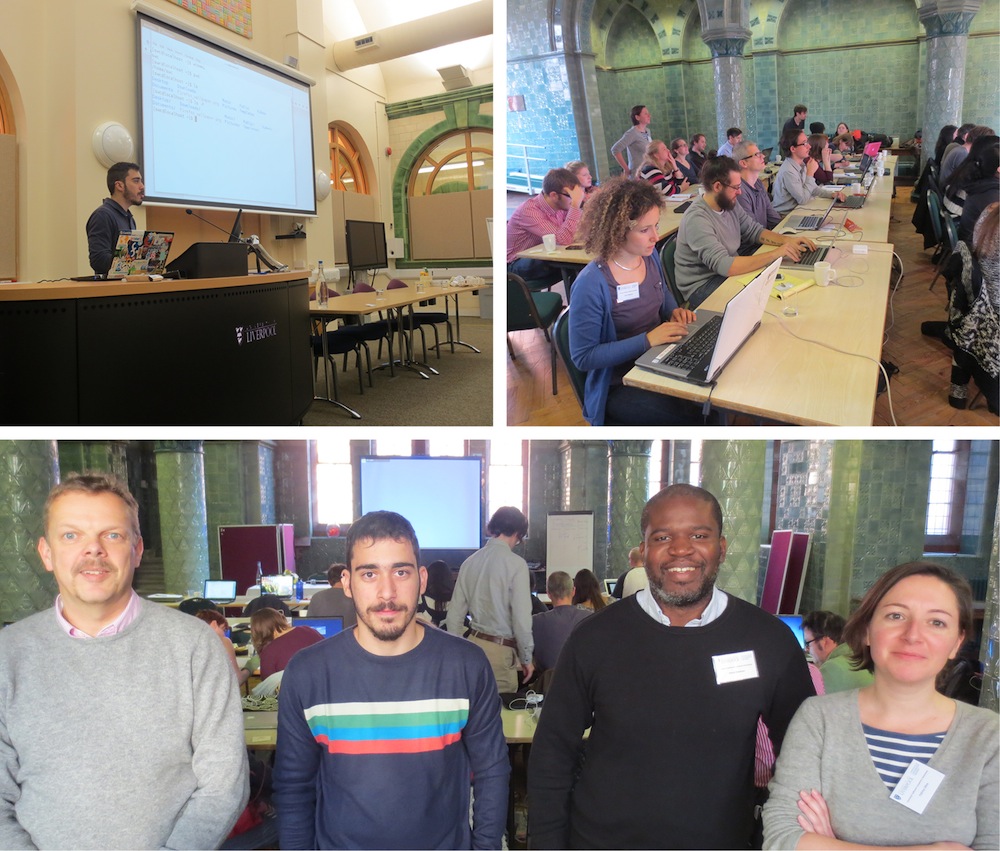Lisa and I have been involved in two Software Carpentry Bootcamps this year: firstly the hosts of a Bootcamp in April at the University of Warwick, and the second, just last week, at a Bootcamp co-organised with the Centre for Genomic Research at the University of Liverpool. A few people at the Liverpool event expressed interest in organising their own workshops, so we thought we would talk you through the stages of hosting a bootcamp and share our experiences to help you decide whether you want to run one of your own.
1. Early planning: Decide where the event will be, who will pay, who your audience is and what topics you want to be covered.
It is (now) not free to host a Software Carpentry event. When we organised the Warwick Bootcamp, Software Carpentry was subsidised by the Mozilla Foundation, but since the recent move to its own Software Carpentry Foundation, events now command a fee (TBC) – it’s still a non-profit organisation though.
Software Carpentry trainers are volunteers but you will need to be able to reimburse their travel, food and accommodation expenses. They can come from anywhere in the world, so budget for transatlantic flights!
Other costs you will need to think about include venue hire, and travel, food and accommodation for the workshop participants. It is also up to you whether you want to charge people to attend the workshop to recoup some or all of your costs. For our first bootcamp at Warwick we had sufficient funding to make the event free for attendees, and we paid for one nights’ accommodation too. Because it was free, we did get some last-minute drop-outs, but we had a long waiting list to fill the empty spaces. At the Liverpool event, trainees paid a small registration fee, and paid for their accommodation themselves. Both events booked up quickly and were oversubscribed, so either model works.
We provided lunch and refreshments during both workshops (caffeine breaks are definitely recommended!), and also organised a dinner on the first night of the workshop.
Both of our bootcamps were for complete beginners, but if there are specific topics you need to cover, Software Carpentry can tailor a programme to your needs.
2. First contact with Software Carpentry: If you’re in the UK, the Software Sustainability Institute (SSI) in Edinburgh is your point of contact for organising Software Carpentry events. There is information and an email address on the Software Carpentry website.
Discuss your ideas for the bootcamp with Software Carpentry. We worked with Aleksandra Pawlik and Giacamo Peru from SSI over Skype and via email. Software Carpentry requires core topics to be covered, so there may be some negotiating as you work it out. As our bootcamps were for absolute beginners, unlike most Software Carpentry events, this took some time but was not at all difficult to sort out.
Decide on a date, making sure to consider other events that might limit both trainees and instructors.
The Software Carpentry website suggests being flexible with the dates to make finding instructors easier. I think this would mean pulling a bootcamp together very quickly, which might be ok for an institutional event but was impossible for us.
(more…)






